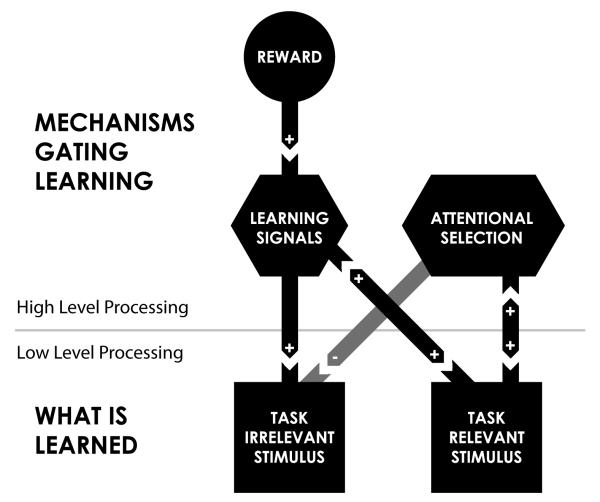Figure 1.
Schematic of mechanisms found to be involved in TIPL. TIPL consists of mechanisms gating learning (top), which are thought to be high-level stages of processing, and, changes in the sensory processing (bottom), which are thought to be low-level stages of processing. A task-relevant stimulus can trigger the release of learning signals that promote learning of both task-relevant and task-irrelevant stimuli (c.f. Seitz and Watanabe, 2003). Task-relevant stimulus processing can also trigger attentional selection that inhibits learning of task-irrelevant stimuli and promotes learning for task-relevant stimuli (c.f. Tsushima, Seitz and Watanabe, 2008; Chou, Seitz and Watanabe, in press). Learning signals can also be released through other processes such as delivery of rewards (c.f. Seitz, Kim and Watanabe, 2009).

